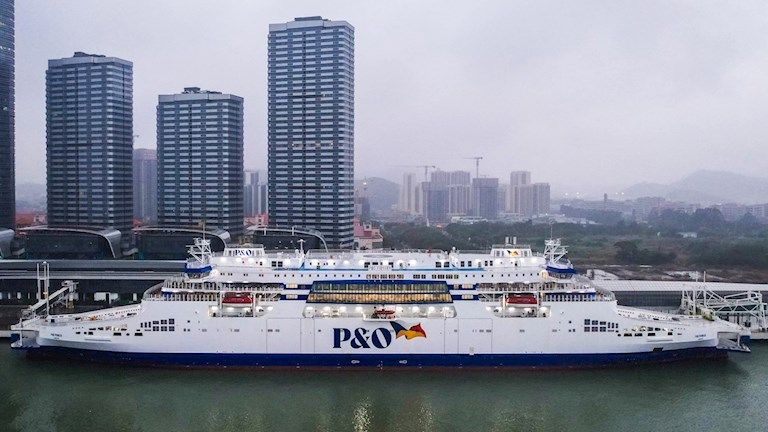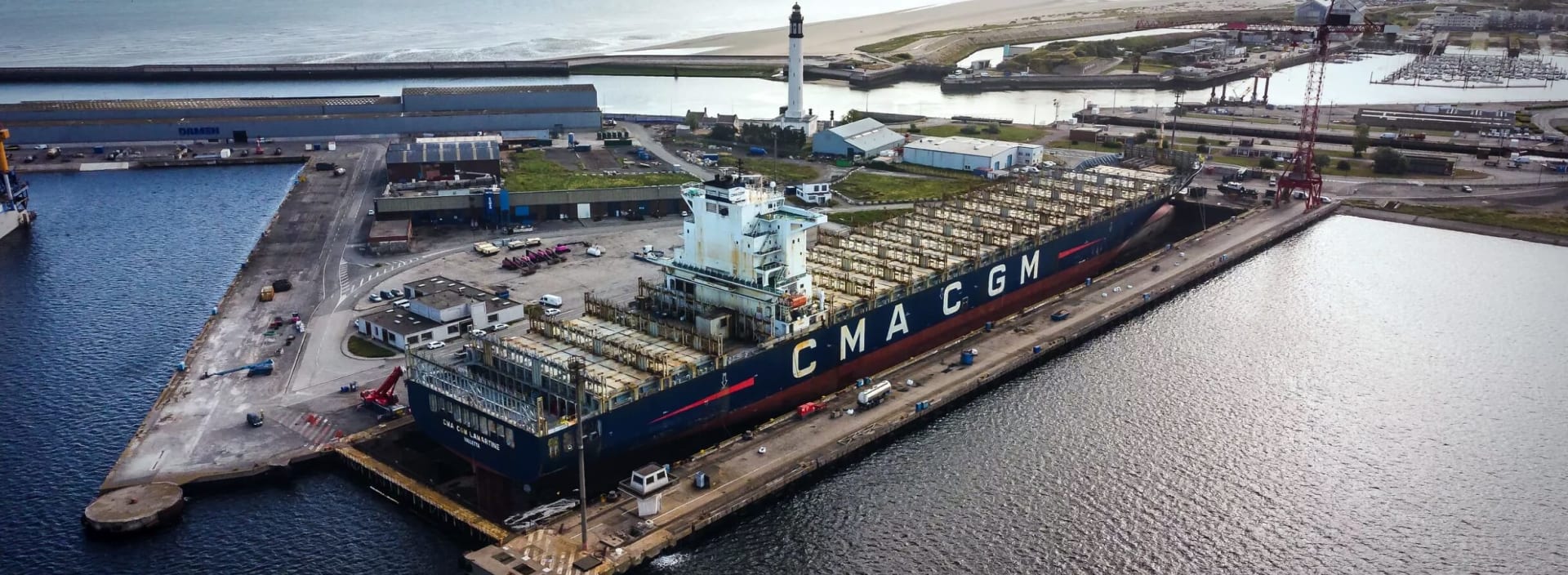ABB's hybrid power and propulsion system drives sustainability gains for P&O super-ferries

Battery power makes its debut on Europe’s busiest short sea route this summer. The new ‘Fusion Class’ passenger ferry P&O Pioneer marks a high-profile milestone on shipping’s decarbonization journey, enabled by ABB.
P&O Pioneer is the largest double-ended ferry in the world and, with space for 1,500 passengers, 200 cars and 2,800 lane meters of freight, the largest ship on one of the UK’s key gateway routes. Built by Guangzhou Shipyard International, the 230-meter vessel has now begun commercial operations, to be followed by the delivery of the sister ship P&O Liberte later this year.
However, size is by no means the only distinguishing feature for the new P&O ‘Fusion Class‘ ship. P&O Pioneer is equipped with ABB’s hybrid power and propulsion solution, which holds the key to setting new standards in cross-Channel sustainability. Featuring one of the highest capacity Energy Storage Systems (ESS) ever installed on a ship, the 8.8MWh of battery power on board these ships is recharged by its diesel generators during operations underway, in a hybrid solution that consumes 40 percent less fuel than the existing ships on the route. In Dover and Calais, battery power can be used to achieve emissions-free operations alongside and during ferry maneuvering, in a key environmental benefit for local residents, passengers and crew.
In another first for cross-Channel ferries, both ships will benefit from Azipod® propulsion technology, with four 7.5MW units installed on each ship, demonstrating the continued preference for the ABB technology in the market. Azipod® propulsion is proven to cut fuel consumption by 20 percent compared to traditional shaftline propulsion. By decoupling energy sources from the propulsion, P&O Pioneer will be able to use any combination of onboard energy to ensure safe and reliable Channel crossings.
The double-ended design features a pair of Azipod® units and a bridge at each end, meaning that there is no need to turn the ships in port. Officers simply walk to the opposite bridge, saving seven minutes on each outbound and return journey in the process, and one ton of fuel – a sixth of the fuel used on the 21-mile crossing.
Future-proof super-ferry
The complete hybrid propulsion package provides a highly practical way of advancing towards a lower, and potentially zero-carbon future. Fusion class ferries feature onboard infrastructure for shore-based charging, to be used once port facilities become available, with the option in place to consider exchanging gensets for additional batteries to enable ‘carbon neutral’ operations.
The benefits of bridge-to-propeller integration proved decisive in selecting the hybrid solution for the new ferries. The vessels are also equipped with ABB Ability™ Marine Pilot Control, the intelligent maneuvering and control system that enables safer, more efficient operations by automating some navigational tasks to allow bridge officers to focus on optimizing overall ship control and positioning.
“I think it is fair to say that these ferries represent a massive step change in high-intensity ferry operations,” says Palemia Field, Ferry Segment Manager, ABB Marine & Ports. “P&O Ferries' sustainability journey with so many proven ABB technologies onboard emphasizes ABB’s strong position in driving the decarbonization of shipping. With our integrated full-electric and hybrid propulsion solutions, digital technologies for further optimisation and increasing levels of automation supporting onboard crew, we support the ferry market to meet today’s regulations and future-proof their vessels for tomorrow.”
Industry body Discover Ferries recently suggested that the UK passenger ferry fleet will almost triple in the next years, resulting in a total of 17 hybrid passenger ferries operating in UK waters by 20271.
[1] https://www.discoverferries.com/a-hybrid-future-for-the-ferry-industry/

